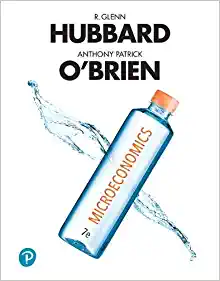Question
1. The principal intermediate target of Federal Reserve policy, according to the textbook, is: A.The nation's money supply B.GNP C.Interest rates, especially money market rates
1. The principal intermediate target of Federal Reserve policy, according to the textbook, is: A.The nation's money supply B.GNP C.Interest rates, especially money market rates D.Reserves of the banking system E.None of the above
2. A change in deposit reserve requirements affects: A.The coefficient of expansion B.Mix between excess and required reserves C.Interest rates D.Total volume of reserves E.A, B and C above F.A, B, C and D above G.None of the above
3.Changes in the Federal Reserve's discount rate affect: A.The cost of borrowing reserves B.Other interest rates in the money and capital markets C.Expectations about future credit conditions D.A and B above E.A, B and C, above
4. If the Federal Reserve purchases securities from depository institutions, one of the following events is not likely to occur, according to the discussion in your text. Which event is not likely to occur? A.Total reserves of depository institutions will rise B.Interest rates will rise C.Excess reserves will rise, at least temporarily D.Loans and investments will increase E.All of the above are likely to occur following the open-market purchase described
5.Commercial banks hold about ____ of the total assets of all financial institutions headquartered in the United States. A.One-third B.One-fourth C.Half D.Two-fifths E.None of the above
6. U.S. banks have penetrated overseas markets for which of the following reasons? A.Financial needs of their corporate customers expanding abroad B.Access to funds from the Eurodollar markets C.Fewer regulatory barriers and less competition D.All of the above E.None of the above
7. Which of the following reasons account for the recent increase in the failure of U.S. banks? A.Willingness of bankers to accept greater risk in their operations B.Increased volatility of economic and financial conditions C.Leniency in the interpretation and enforcement of regulations D.All of the above E.None of the above
8. The largest bank ever to fail in U.S. history was: A.U.S. National Bank of San Diego B.Detroit Commerce Bank and Trust C.Franklin National Bank New York D.Drovers National Bank of Chicago E.None of the above
9.The growing importance of nonbank financial institutions in the economy and financial system is due to their: A.Rapid growth B.Offering of bank-like services C.Both A and B D.None of the above
10.The three leading consumer installment lending institutions in the United States, arrayed in order from most important to least important, are: A.Commercial banks, credit unions and savings and loans B.Finance companies, commercial banks and credit unions C.Commercial banks, credit unions and savings banks D.Commercial banks, finance companies and credit unions E.None of the above
11.Credit unions offer an interest-bearing checking account known as the: A.Share draft B.NOW account C.ATS D.Money store E.None of the above
12.Life insurance companies typically insure their policyholders or their beneficiaries against which of the following risks? A.Premature death B.Living too long C.Serious illness or accident D.All of the above E.None of the above
13.In making their investment decisions, life insurers pursue: A.Maximum rate of return, regardless of the nature of the investment B.Short-term investments which roll over into cash rapidly C.Long-term investments promising income certainty and safety of principal D.A and C above E.None of the above
14.The principal investment security held by life insurance companies is: A.Corporate bonds B.Corporate stock C.Mortgages on farm, residential and commercial properties D.U.S. government and federal agency securities E.None of the above
15.According to the ____ the U.S. Congress stipulated that no bank holding company could acquire more than 5 percent of the voting stock of banks located outside its home state without express permission from the state entered. A.Glass-Steagall Act B.Bank Merger Act C.Douglas Amendment D.Depository Institutions Deregulation and Monetary Control Act E.Riegle-Neal Interstate Banking Act
16.According to the ____ nonbank businesses acquired by bank holding companies must be "closely related to banking." A.National Bank Act B.Bank Holding Company Act of 1956 C.1970 Amendments to the Bank Holding Company Act D.Glass-Steagall Act E.Riegle-Neal Interstate Banking Act
17.The ____ permitted bank holding companies to acquire savings and loan associations and savings banks within each state and across state lines. A.Financial Institutions Reform, Recovery and Enforcement Act of 1989 B.Riegle-Neal Interstate Banking Act C.Gramm-Leach-Bliley Act D.Glass-Steagall Act E.Depository Institutions Deregulation and Monetary Control Act
18.If the Treasury is compelled by a sizable budget deficit to borrow funds from the nonbank public, all of the following effects are likely except one. Which effect is notlikely to happen? A.Nation's money supply will increase B.Total spending in the economy will increase C.Total consumption expenditures will increase D.Interest rates are likely to rise, at least in the short run E.All of the above are likely to happen
19.If the Treasury is compelled by a sizable budget deficit to borrow funds from depository institutions, all of the following effects are likely except one. Which effect is notlikely to happen? A.Nation's money supply will increase B.Total reserves of depository institutions will increase C.Excess reserves of depository institutions are likely to fall D.Total spending and interest rates will probably rise E.All of the above are likely to happen
20.If the Treasury is compelled by a sizable budget deficit to borrow funds from the Federal Reserve banks, all of the following effects are likely except one. Which effect is notlikely to happen? A.Nation's money supply will increase B.Total reserves of depository institutions will increase C.Total spending in the economy will rise D.Interest rates will tend to rise E.All of the above are likely to happen
Step by Step Solution
There are 3 Steps involved in it
Step: 1

Get Instant Access to Expert-Tailored Solutions
See step-by-step solutions with expert insights and AI powered tools for academic success
Step: 2

Step: 3

Ace Your Homework with AI
Get the answers you need in no time with our AI-driven, step-by-step assistance
Get Started


